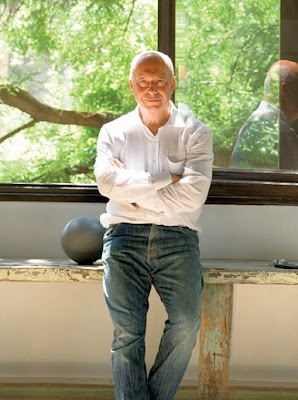I have worked and reworked, and perhaps overworked, this piece until I can stand it no more. I considered dumping the whole thing, but there seem to be so many people around me in a tenuous state that I couldn’t abandon it. I usually print this sort of thing on a Friday, so then we can go back to talking about fabric on Monday and it doesn’t seem like such a jump; forgive me the disconnect. And for those of you who will worry, I am fine.
This Fall there was a young man hanging around our children’s school. I had heard stories of his being on the perimeter of the campus in his underwear and walking onto the playground to talk to one of the teachers. He had crossed the sidewalk, pushed open the unlocked chain link fence and told her she was pretty. She is. He sometimes stood outside the gate and watched soccer practice. He was not violent. He was not a registered sex offender. It is an urban school and the families there, mostly, value being connected to that environment. Still, it was concerning as the ultimate responsibility, beyond being good neighbors, is the safety of the children.
The school security was managing the situation, but eventually were concerned enough to contact the police. The police told the man he needed to stay away from the school, though I think he may live across the street. They told him that he could not interact with the children and that they would respond swiftly to any call from the school reporting inappropriate behavior.
A couple of weeks following the warning, our school and the church with which it is affiliated held their annual rummage sale. The sale doesn’t raise much money but both groups agree that it provides a sort of community service. This year’s sale was personally timely as I was in the midst of a move, so I loaded up my ubiquitous black SUV and drove some of my too-much stuff to be sold for the benefit of the church and school. To help. As I was unloading, a young man I didn’t know lingered by the back of my car. He was drinking Starbucks coffee and eating a scone.
“Hi, how are you?”
“Oh, I’m ok. I haven’t been feeling very well. I’ve been throwing up a lot.”
He did not appear to be sick; I continued unloading my car.
“I’m so sorry. That doesn’t sound ‘ok.’ Are you sure you’re alright?”
“Well, I have a problem with alcohol and I haven’t had a drink in four days.”
“Huh. I know that’s tough. Do you have someone to talk to?”
“Are you giving away food?”
“No, we’re not today. We are setting up for a sale to help the church. Do you need food? You know the food pantry is…”
“Yes. I know about the food pantry.” And he wandered away.
During this exchange, several of the volunteers engaged in a full conversation using only significant looks and raised eyebrows; security was called. I realized that this was the man who had been hanging around the school.
Later, I told a friend that he did not trigger the raising of the primordial red flag. I was not afraid of him. I felt the need to neither fight nor flee. He did not seem scary; he seemed needy. “He needs help,” I told her, “I know he can’t hang around the children, but all he can see are what looks like all these rich, white women coming and going every day. It must seem like a place where you could get some help.”
“You know,” she replied, “he hasn’t really had interaction with the children, has he? It seems mostly he is reaching out to the adults.” Like me. Who did nothing.
It’s interesting, the process of and the reaction to coming undone. Coming undone is different than depression. Depression is passive, it comes in like the tide and washes over in waves; coming undone is active. It can be quick and dramatic, the unraveling of a hand-knit scarf. One doesn’t know if one should cut, or knot. Still, this undoneness is a sinuous process. Liquid. The other kind has as much movement, but more violence. The ripping of stitches. The sliding of scissor through the back of the yarn and the angry pluck, pluck, pluck of the half-hinged threads. Steeped in frustration, this undoneness lasts longer and costs more.
I’ve come apart a few times, in both ways, the unravel and the wretch, and sometimes I show it more than others. Most of us, I think, put on a brave face. The need to be “fine” is deeply ingrained. Even as life is unraveling most of us manage to show up, to chat, to wear pants. This charade, of course, leads others to believe that everything is, indeed, fine. Leads others to believe they are alone in their undoneness. Isolated, when of course the opposite is true; we all lose it eventually.
I come from a long line of closeted crazies. Along with learning to stand up straight, to be polite, to not impose, I learned that we keep the craziness at home. It can fly around the house or lie in the dark, but it stays, very strictly, there. Beyond the front door, we are fine. We are fine and we wear lipstick.
The world wants us to be fine. At our worst moments we are buffeted and buoyed by a chorus of “Everything will be fine!” I nod in agreement. “Everything is fine.” I am fine. But an uneven past allows my landscape of fine to be rocky and steep. The spot at which my attitude indicator reads level might show a distinct slant for someone else.
“I’ll bet no one knows,” said my first good therapist, a man I discovered after spilling my guts to a woman who spilled hers right back and another gentleman who stared, distant and distantly, out the window over my shoulder occasionally asking, “How do you feel about that?” We, the good therapist and I, have wrangled this subject again and again. What is the point, I wonder, of people knowing? What is the value in the world seeing you undone? The world, very clearly, wants us to be fine.
We want to help. We proclaim it from billboards and pamphlets and pulpits. We help the needy. But really what we like to do is help the needy over there. Somewhere else. In that neighborhood, in that country, in that condition. What really makes us uneasy is to confront the need in front of us, be it dirty and deranged or dappled with diamonds.
A few days after the rummage sale I drove the soccer carpool. As I chauffeured my car full of boys, boys who have known each other since they were three, they discussed a classmate. He was annoying. He didn’t get it. He called and called and asked and asked. “Even my mom understands; she told him I had a doctor’s appointment.” He needs too much. He needs too much to have a friend. So much, that he is hard to bear.
But we will have the bake sales and lemonade stands for our sister school in Haiti. And we will bring in canned goods for the food pantry. To help. There.
It’s counter-intuitive. It stands to reason that if someone appears needy we would want to help. Counter-intuitive because we wouldn’t want to spend our time with someone who would be unaffected by death, by tragedy, by life. We wouldn’t care for someone so oblivious that their hinges don’t come loose at the worst of it. Still, neediness repels.
Not always, obviously. There are exceptions, our own emotional Mother Teresas who step in despite our protests. People who show up and keep showing up. People who call and keep calling. People who say, “You are not going through this alone.” Not the world, just the few people who know. Though I wonder at what point the tipping takes such a slide that even these people give up the ghost. I wonder at what point we end up talking to strangers in parking lots.
I know women who wear their instability on their sleeves and I avoid them as if they had a pox. You would think that I would be particularly sensitive, tolerant and empathetic, but they unnerve me. I’m familiar with the randomness of their fineness and their undoneness and it scares me. I should have built up immunity by now, but I still fear it’s contagious.
On my best days I worry that my toe is touching the line of undoneness; I am often checking for symptoms. When I see those women, the ones some call “refreshing” and others “a nightmare,” I recognize them. I know them. And I have known the futility of trying to help. A black hole. A tar baby. So I smile stiffly and step back. Helpless.














